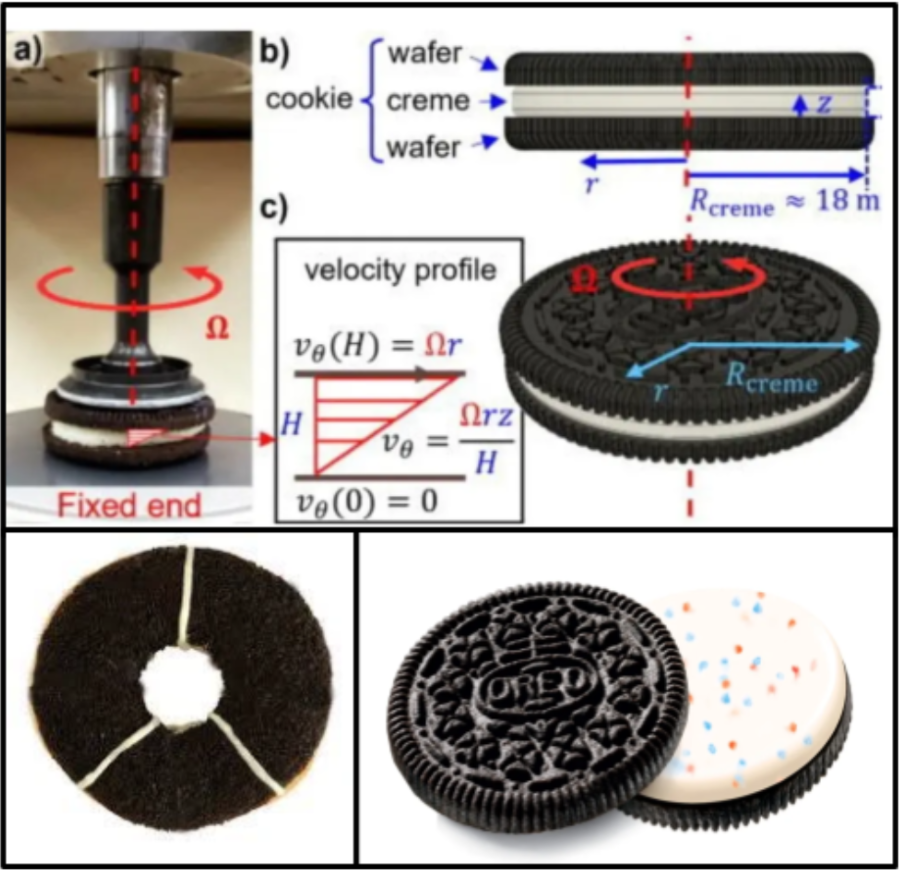If you’ve ever split an Oreo in half, you may have noticed that the creamy filling tends to stick to just one side of the cookie. This peculiar phenomenon has puzzled Oreo lovers for years, and now, thanks to researchers at the Massachusetts Institute of Technology (MIT), we have some answers. Engineers at MIT have studied the mechanics behind this issue, offering insights into the forces at play and providing a window into the fascinating world of “Oreology.“
MIT’s team of mechanical engineers, led by Crystal Owens and Max Fan, set out to uncover the physics behind the Oreo twist. Inspired by curiosity and the limitations of closed labs during the COVID-19 pandemic, the team applied rheology—the study of how materials flow under stress—to Oreo cream. Using a modified rheometer, they measured the torque required to split Oreos apart, analyzing how the cream responded to twisting forces.
The team discovered that Oreo cream behaves as a “yield stress fluid,” a material that behaves like a soft solid but flows when subjected to sufficient stress. As the wafers twist in opposite directions, the cream deforms, stretches, and eventually fractures. Sensors tracked the cream’s viscoelasticity—its ability to resist deformation and flow.
Through their tests, the researchers found that the torque required to twist open an Oreo is similar to the force needed to turn a doorknob and significantly less than that required to unscrew a bottle cap. Regardless of flavor or cream thickness, the filling almost always stuck to one wafer. Only older cookies, where the cream had slightly dried out, occasionally split more evenly.
The researchers traced the root of this behavior to the manufacturing process. During production, a dollop of cream is applied to one wafer before the second wafer is pressed down on top. This step-wise process causes the cream to bond more strongly to the wafer it initially touches, influencing how it separates during twisting. Videos of the production process revealed that even slight delays between cream application and wafer placement could play a role.
The team also observed that environmental factors, such as heating or jostling during packaging and transport, might impact cream adhesion. They noted a pattern in boxed cookies: Oreos from the left side of the package tended to leave cream on the right wafer, while cookies from the right side left cream on the left wafer.
At the heart of the study lies the detailed physics of Oreo cream. The cream’s unique properties as a yield stress fluid make it difficult to split evenly. The researchers likened the Oreo structure to a classic parallel plate rheometry model: the cream is the fluid layer between two solid plates (the wafers), and as the plates counter-rotate, the cream stretches and fractures under stress.
The adhesive strength of the cream was found to be surprisingly robust, comparable to mozzarella cheese, and significantly greater than materials like peanut butter or cream cheese. This explains why the cream stubbornly adheres to one wafer even under sufficient torque.
To make their study accessible, the researchers created a 3D-printable device called the Oreometer. This contraption uses pennies and rubber bands to precisely control the twisting force needed to split an Oreo, enabling enthusiasts to replicate the experiments at home. The open-source design is available for anyone curious about the physics of Oreos.
Although the team explored potential solutions for evenly splitting the cream, no method proved effective. Owens suggested that texturing the inner wafer surfaces might improve the cream’s grip, but as the cookies are now, splitting evenly remains elusive.
In all, the study of Oreos shows that even the simplest questions can inspire scientific discovery. The next time you twist open an Oreo, remember the intricate physics behind the act. You’re not just breaking a cookie—you’re engaging in a little piece of scientific exploration.













































































































































